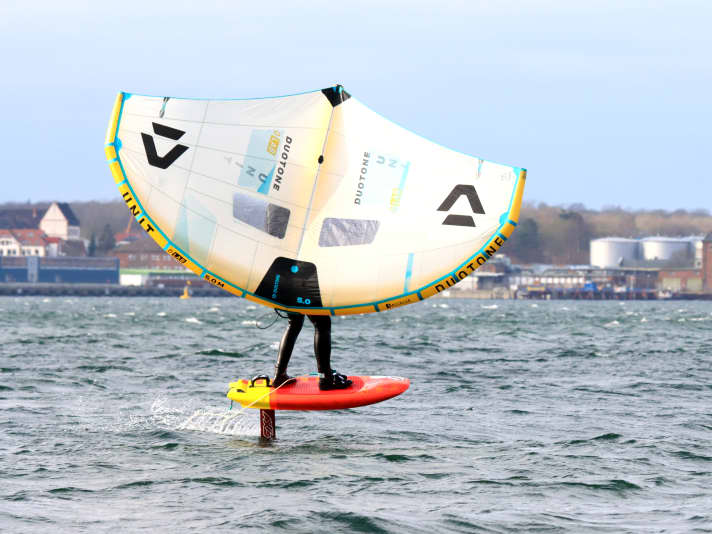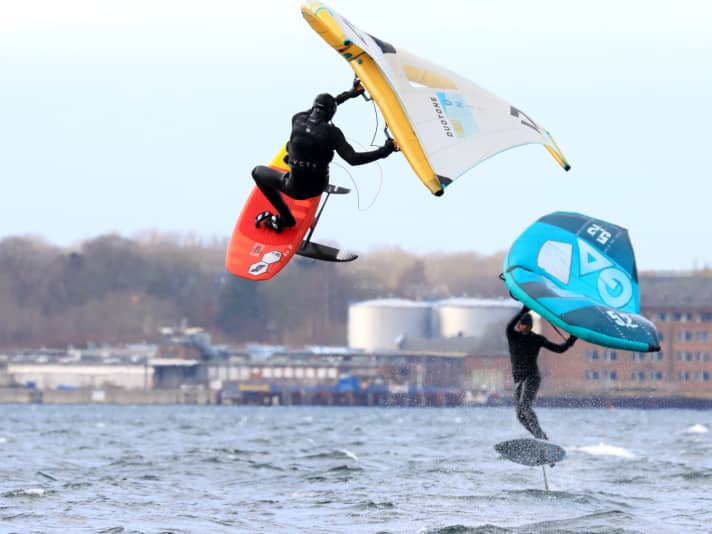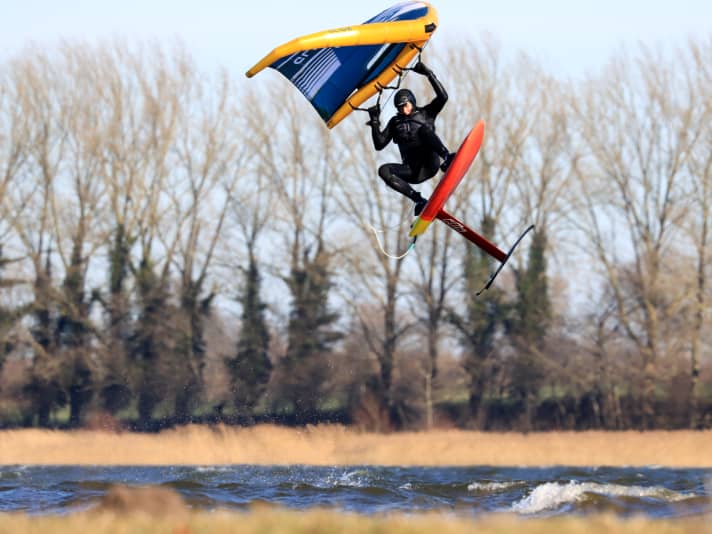
Last season, we already presented the Pocket Air Wingboard in the test on our website - and discovered both light and shade. The new Tabou Pocket Air has been extensively updated.
The Tabou Pocket Air on land:
With a total of eight sizes ranging from 57 to 137 litres in volume, the model covers all potential target groups from cracks to beginners. Apart from the large 137 litre, all sizes - in addition to the somewhat more robust, heavier and 300 euro cheaper "MTE" construction - are also available as a "Team" construction. Apart from the name, the Pocket Air 2022 no longer has much in common with its predecessor. The outline and volume distribution have been revised, as has the crotch width of the loops - this has now been adjusted from the "John Wayne memory stance" to the usual size.

The designers have given the bow an extra portion of volume to keep the board stable in the water despite its short length. Overall, the equipment is of a very good standard, the large pad has a good grip and there are enough strap positions available for all personal preferences. At a measured 7.04 kilos, the weight of the Pocket Air MTE 87 tested by us is within normal limits. If you want it a few hundred grams lighter, you can get the identical shape in team construction for an extra 300 euros.
We also present this test model in a short clip on our YouTube channel before. Click inside!
The mast track, which was still installed on the 2021 model to suggest a supposed suitability for windsurf foiling, is also a thing of the past - the Pocket Air 2022 is designed purely as a wingfoil board.
On the water:
Despite its reduced length of 5'0'' (153 centimetres) and volume of only 87 litres, the Tabou Pocket Air MTE 87 is quite balanced in the water - the "pumped up" nose and widened tail obviously do a good job here. Even if the board is still not in the absolute top group when it comes to passive planing, the behaviour when starting off has improved significantly compared to the previous model. The straighter outline, a flatter underwater hull and a nose that pushes less water now allow the board to reach take-off speed more quickly. Nevertheless, the shape is not made for simply standing passively on deck and waiting for take-off - those who pump accordingly have a clear advantage.

Once lifted, the shape fully utilises the advantages of its compact dimensions: It hangs on the foot with good control, the large deck pad provides plenty of grip and accidental touchdowns are not a problem because the bevelled edges usually send you back up gently. The Tabou is also convincing in the air, where it also benefits from its short length during rotations.

Conclusion:
The Tabou Pocket Air MTE has been greatly improved compared to its predecessor and is now an absolutely competitive wingboard. It is stable in the water for a board of its volume class and is therefore quite easy to launch up to a body weight of 90 kilos, but also sets few limits for ambitious wingfoilers. If you want to do a lot of jumping and tricks, you should at least consider the lighter Team construction.
Compact all-rounder; favourable price
Passive gliding for beginners
